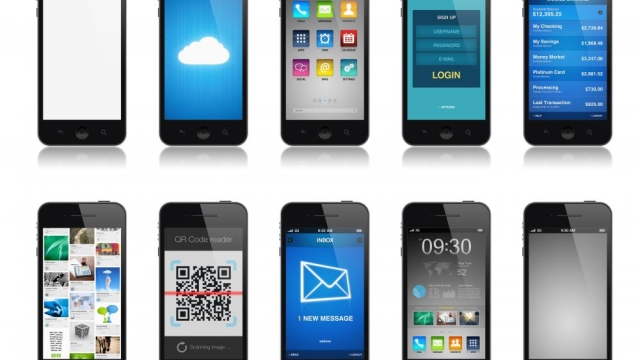Crafting seamless code is an art that lies at the heart of software design and development. In the ever-evolving world of technology, mobile applications have taken center stage, revolutionizing the way we interact, communicate, and conduct business. From social media platforms to productivity tools, mobile apps have become an indispensable part of our daily lives. However, behind every successful mobile app lies a robust foundation of sophisticated software design and development techniques.
When it comes to mobile applications, software design and development encompass a wide range of intricacies. From determining the purpose and functionality of the app to creating intuitive user interfaces and ensuring high performance, every step plays a critical role in delivering a seamless user experience. With the rapid growth of the mobile app market, developers now face the challenge of catering to various platforms, devices, and user preferences.
Different types of mobile applications serve diverse needs and user requirements. Whether it’s gaming apps that offer immersive experiences, e-commerce apps that provide convenient shopping options, or utility apps that simplify everyday tasks, each category demands careful planning and meticulous execution. Software design and development must align with the specific goals of the app, ensuring optimal performance and user satisfaction.
As the demand for mobile applications continues to soar, it becomes crucial for developers to stay updated with the latest trends, tools, and best practices. The landscape of software design and development is constantly evolving, and keeping up with these advancements is key to delivering cutting-edge apps. By combining innovative technologies and elegant code architecture, developers can create seamless mobile applications that captivate users and elevate the overall digital experience.
In this article, we will delve into the world of software design and development, specifically focusing on mobile apps. We will explore the various types of mobile applications, their significance in today’s digital age, and delve into the fundamental principles that underpin the art of crafting seamless code. By understanding the intricacies of software design and development, we can unlock the potential to create intuitive, efficient, and user-friendly mobile applications that elevate the way we navigate the digital world.
Understanding Mobile App Development
Mobile app development is a rapidly growing field in the world of software design and development. With the proliferation of smartphones and tablets, the demand for mobile applications has skyrocketed. These applications are designed to run on mobile devices, offering a range of functionalities and services to users.
Software design and development for mobile apps involves creating applications specifically tailored for these devices. This requires a deep understanding of the various types of mobile applications that exist, such as native apps, web apps, and hybrid apps. Native apps are developed for a specific platform, utilizing the features and capabilities of that platform to deliver optimized user experiences. Web apps, on the other hand, are websites that are optimized for mobile devices and accessed through a web browser. Finally, hybrid apps combine elements of both native and web apps, allowing for cross-platform compatibility.
When developing mobile applications, it is important to consider factors such as user interface design, performance optimization, and security. Designing an intuitive and user-friendly interface is crucial to ensuring that users can navigate the app easily and efficiently. Performance optimization involves optimizing the code and resources of the application to ensure it runs smoothly on various devices and operating systems. Security is also a critical aspect, as mobile apps often handle sensitive user data and must protect it from threats.
In conclusion, mobile app development is a specialized field within software design and development that focuses on creating applications specifically for mobile devices. Understanding the different types of mobile apps, as well as considerations such as user interface design, performance optimization, and security, is essential for crafting seamless code and delivering high-quality mobile applications.
Exploring Software Design Principles
In the world of mobile applications, a strong foundation in software design principles can make all the difference in creating seamless and successful products. Understanding these principles is essential for software developers aiming to craft high-quality mobile apps. In this section, we will explore some fundamental software design principles that can guide developers towards building robust and efficient mobile applications.
-
Modularity: A key principle in software design is modularity, which refers to breaking down complex systems into smaller, independent components. By doing so, developers can create modular code that is easier to understand, maintain, and test. In the context of mobile app development, this means dividing the application’s functionality into separate modules, such as UI components, data storage, and business logic. Each module should have well-defined responsibilities and clear communication interfaces to interact with other modules seamlessly.
-
Abstraction: Abstraction allows developers to hide unnecessary details and focus on the essential aspects of a system. In the realm of mobile apps, abstraction plays a vital role in creating reusable code components. By abstracting common functionalities, such as user authentication or network communication, developers can save time and effort by leveraging these abstractions across different mobile applications. This not only improves the overall development process but also enhances the consistency and reliability of the apps being built.
-
Scalability: Scalability refers to the ability of a software system to handle increasing amounts of data, users, and functionalities without sacrificing performance or stability. Mobile applications should be designed with scalability in mind to accommodate potential growth and evolving user needs. This involves choosing appropriate data structures, utilizing efficient algorithms, and implementing techniques such as caching or load balancing. By considering scalability during the design phase, developers can ensure their mobile apps can handle increasing demands without compromising the user experience.
Remember, these are just a few of the many software design principles that can greatly influence the quality and success of mobile applications. By adhering to these principles, developers can create code that is not only functional but also maintainable, extensible, and efficient. In the next section, we will delve into different types of mobile applications and their unique design considerations.
Different Types of Mobile Applications
The world of mobile applications is diverse and ever-expanding, catering to various needs and preferences of users. Let’s explore some of the different types of mobile applications that have gained immense popularity in recent years.

Social Networking Applications: Social networking applications have revolutionized the way we connect and interact with others. Platforms like Facebook, Instagram, and Twitter have become an integral part of our daily lives, allowing us to stay connected with friends, family, and even acquaintances. These apps provide features such as messaging, photo and video sharing, and news feeds, creating virtual communities and enhancing communication.
-
Productivity Applications: With the increasing demand for organization and efficiency, productivity applications have become essential for many individuals. Apps like Evernote, Trello, and Microsoft Office offer tools for note-taking, task management, document creation, and much more. These apps help streamline work processes, boosting productivity and enabling users to stay organized on the go.
-
Entertainment Applications: Entertainment applications, including gaming apps, music streaming services, and video-sharing platforms, have become a significant part of the mobile app landscape. From addictive games like Candy Crush and Angry Birds to streaming services like Spotify and Netflix, these apps provide immense entertainment and multimedia experiences, catering to various interests and preferences.
In conclusion, the world of mobile applications offers a vast array of options for users, with different types of apps catering to specific needs and interests. Whether it’s connecting with friends, staying organized, or seeking entertainment, there’s an app for almost everything. The continuous evolution in software design and development has made it possible for developers to create seamless and user-friendly mobile applications that enhance our daily lives.



